2015 Hop Yard Budget
/http://youtu.be/lmYm2lG59aY At Camps Road Farm we grow our hops following organic standards but we are not yet organic certified. Growing hops this way adds a lot of obstacles that might be easier to face if we were growing them conventionally but we feel it is worth the extra effort. Nothing against growing them conventionally, just putting it out there so you have perspective on our numbers.
The hops are technically in their third year but there were a lot of mistakes made in teh first couple of years as the learning curve has been very steep. They should perform this year as second year hops. We have done a fair amount of propogating and replanting so there are bines at different stages of the process throughout our yard. The yard itself is 1.4 acres. There are 21 rows that are 250 feet long. I'll get into a little more detail about how we grow hops and what are some of the mistakes we made a little later in this post.
To download the excel file:
If you would like acopy of teh excel file used to create the video you can scroll to the bottom of the post and put in your name and email address to join the Farm Marketing Solutions email list. If you are already on it you will be receiving a copy of the file in your inbox after this post goes live.
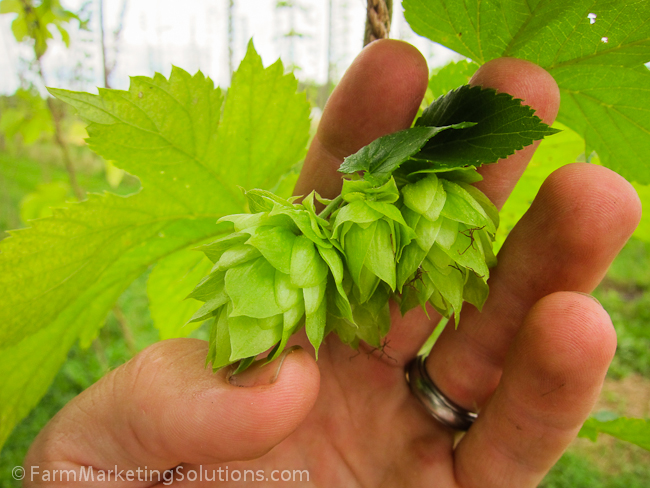
Wet Hops vs Dry Hops
To figure my production numbers for this years budget I have two numbers, wet hops and dry hops. When it comestime for harvest the hops cones (pictured above) will start to dry out in the field. They get to about 80% of their full moisture level and you want to get them off the bine and help them finish the drying process. Once harvested you dry the hops to roughly 8-8.5% moisture content.
What gives the hops their flavoring quality is the lupulin inside the cone between the leaves. You want to get rid of a lot of the moisture because it can casue off-flavors in your beer due to oxidation and decomosition. We use the UVM moisture calculator to calculate the moisture in our hops as we harvest and dry them.
Brewers can use wet hops to brew beer if they have it available. They have to use more because the flavors are not as concentrated and they have to make up for all the water weight. Dried hops are more valuable because (ideally) they have been preserved at their peak flavor and the variables that cause off-flavors have been mitigated or eliminated. There is definitely a lot of art and science to all this (like everything on farm) and it takes some skill to get it right. I am still learning for sure.
Peak production for out hop yard
The estimations for what you can produce from a hop yard per acre vary depending on who is giving you the number, where you are growing it, how you are growing it, etc... We estimate that when the hop yard is full of plants and all of them are fully grown we will yeild around 3000 pounds of wet hops. We have 1.4 acres and will have roughly 1400 plants.
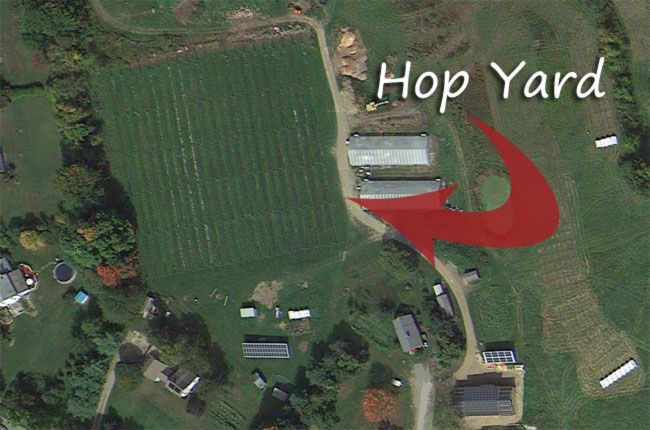
For this years' budget however we are definitely not at peak production. I anticipate we will get about 1000 pounds of wet hops this year.
Labor on a hop farm:
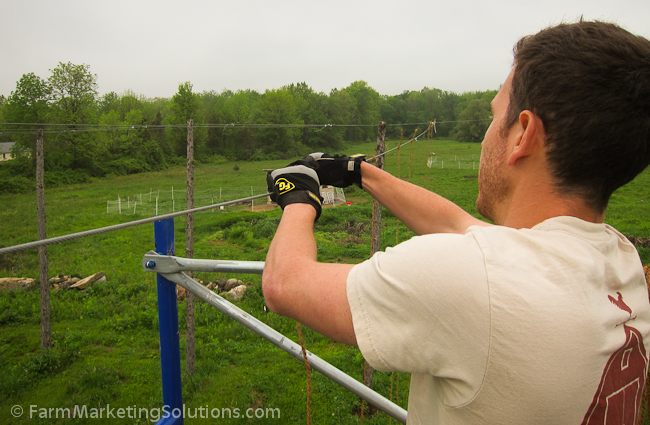
Whether you are starting or running a hop yard there is a lot of labor. Even just walking around to check for pests and problems takes a lot of time. It is just like any other plant that you might grow on farm. They require love, attention, and a heavy dose of understanding. There are pests, nutrient imbalances ordeficiencies, and of course the dreaded downy mildew.
With such a small yard we don't benefit from doing anything at a large scale. Most of the work we do in the hop yard right now is by hand or with simple tools. We train by hand, prune by hand, and trellis by hand. All the manure spreading, ammendment spraying, and over-all care is done in a simple and kind of inefficient manner.
As the yard develops we are going to better track the labor necessary so we canplan out our labor better in the future. A good thing about the hop yard is that even though it is 1.4 acres, all the plants are basically the same. That means it can be easy to train in a group to a task and set them loose.
Ammendments:
Even though we are managing the hop yard according to the organic standards there are still things we have to do to ammend the soil and assist the plants as they grow up to be the hearty beasts they become by harvest time. We ran soils tests earlier this year and we are are a little too acidic at 5.7 so we will be adding lime to get us up closer to 7 where hops are happier. We also usecertain foliar sprays like fish emulsion for a boost of nitrogen when the plants are younger, we use OMRI approved pesticides though we do use them sparingly. As in only if we really really need them.
I apologize that this is a very basic and very vague overview of how we are growing hops. This blogpost is about the budget for the year and not meant to go into real detail about our growing practices. I will be posting videos and other content as the year goes on about our hops operation and all the other things we do on farm. If there are any specific questions or if there is anything you would really like to see this year please leave a message in the comments section below.
Other products you can get from hops:
Besides the hops themselves there are other products you can get from humulus lupulus. We have made wreaths from the bines, propagated and sold hop plant starts, and even gone so far asto experiment making tinctures with the hop flowers as a medicinal herb. It can be used as a sleep aid, can be used in soaps and shampoos and in cooking as hop herb butter.
The possibilities are only limited byyour imagination. It is good practice on farm to get all that you can from the things that you grow. We will be testing our market with different products to see what is successful and year to year get better at making the most out of our hop harvest.
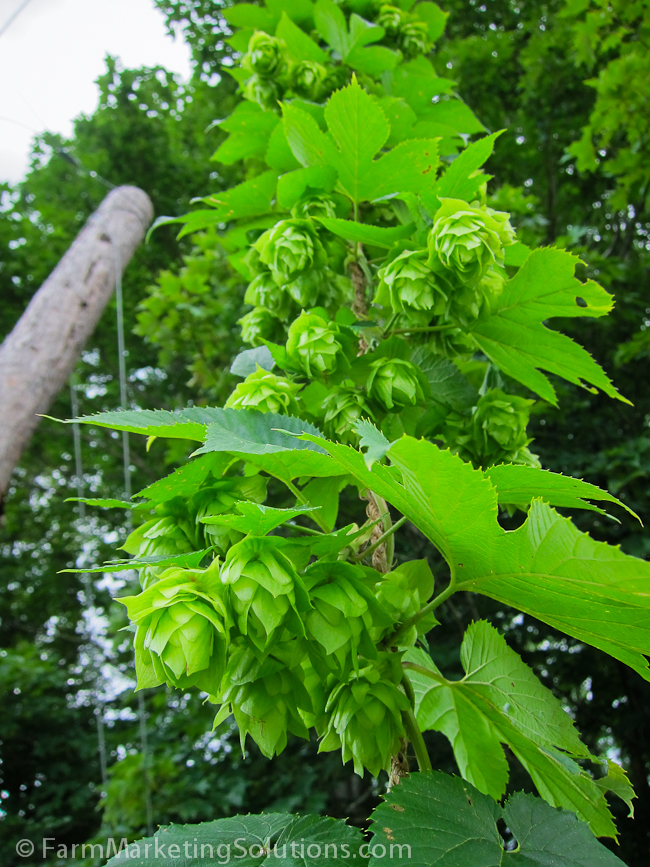
Lessons learned from starting a hop farm:
There are a lot of mistakes you can make when starting a farm. It is part of the learning process. No one is going to do it perfectly and we can all learn and grow as farmers by sharing our hard lessons learned with each other so that we are not all making the same mistakes. In short order here are a few things we would do better when starting the hop farm.
- soil tests, soil tests, soil tests
- ammend soil before planting based on test results
- till and mulch rows before planting
- install irrigation earlier
- make sure the area that the hops are planted is well drained year-round
There are some good stories with each of these examples and I will go into them as the year goes on. One of the best places to follow along with Farm Marketing Solutions and thus my farm is through the FMS YouTube Channel. Subscribe and get updates when I post new videos (if that's your thing).
What we hope to improve on in the future:
Hops need a lot of love and attention. Because we are a very diversified farm there can be things that get over-looked on farm. Livestock has always taken prescidence because we won't let the animals suffer at all because we're "too busy". As we move forward we are more actively planning out time to observe the farm and make sure we are doing all that is required for optimal health of the plants and animals.
In the coming years I plan on having the rest of the hop yard planted where we haveempty spots, we will increase plant health and yeilds, and we will build a community of people involved in the hop yard to help us keep labor costs down.
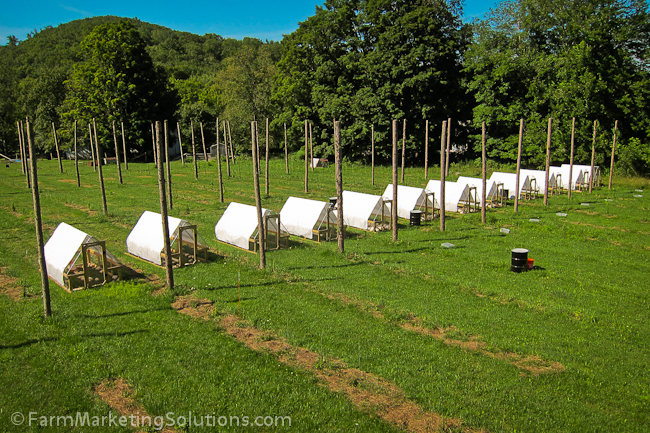
Farm Finance Challenge:
All of my record keeping this year will come into play as we launch the Farm Finance Challenge on Farm Marketing Solutions. I will be publicly publishing my production and financial records on the blog to share with other farmers so that we can all learn from each other and hopefully save a few people from making the same mistakes that I have.
There are a dozen other farms that are joining Camps Road Farm in the Challenge and that is quite amazing!!! Starting 2/9/2015 follow along each month as I publish my records and then the next day publish everyone else's numbers. I am really excited for the transparency and the community that I know will grow from the project. At the end of the day we're doing it to keep ourselves accountable and to support beginning farmers with the power of knowledge.
